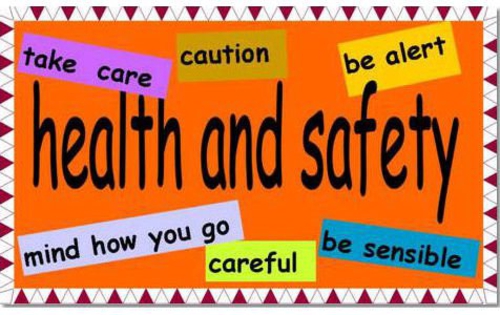With the government pressing ahead with plans to cut the red tape that is strangling British business, the employment minister Chris Grayling has been quoted as saying that the latest changes will bring back common sense to Health and Safety laws. This particular sound bite may well appeal to many people, especially those for who an injury at work means a nasty paper cut. For those in Britain’s riskier industries a relaxation in injury reporting may be the last thing on their minds; literally.
Life on the Edge
If you like living on the edge and fancy a career that involves risk and danger, then farming, construction or manufacturing should be for you. All three industries account for around seventy per cent of deaths at work and each has phenomenally high rates of injury of both the major and minor variety. If it is a risk factor you like in your working life, forget skydiving and become a builder. These industries have all faced increasing regulation in the last thirty years with no perceivable benefit, other than a massive reduction in the level of fatalities. The current cuts are expected to save Britain’s 4.5 million businesses around five pence each, which certainly makes them seem worthwhile. But how dangerous are these cuts and what do those responsible for safety in Britain’s high octane, risk ridden industries need to worry about?
Common Sense?
On the surface the changes are common sense; the reporting of “Injuries, Diseases and Dangerous Occurrences” time limit has been extended to seven days, while the requirement to report an injury at work is now being focussed on those which result in an absence of seven days or more. Most people recover quickly from a paper cut or a bit of bruising caused by a recalcitrant photocopier within this period. However, in the construction injury even minor injuries can be a cause for concern, especially if they result from machinery or dangerous structures. The problem here is that there’s a big difference between a paper cut and an apparently minor injury on a building site. Normally, the former doesn’t require much more than perhaps a little training in how to avoid paper cuts. In the latter a small accident could mask a larger problem; on construction sites mildly dangerous situations can develop into bloody great lethal ones surprisingly quickly.
Dangerous Developments
OK, so site managers are not stupid. They may be pleased to be relieved of the duty to report minor accidents without being daft enough to consider the cause and take any action to stop potentially more dangerous situations developing. However, given time it’s possible that this relaxation may lead to an increasing culture of “overlooking”, even if that is simply “overlooking till I’ve got time”. The same applies to the increase in time allowed before “dangerous occurrences” must be reported. Seven days can be a long time in some industries and what was dangerous seven days ago can be lethal today. Especially in the construction industry continued vigilance and training is going to be a key factor in maintaining workplace safety.
Finding a use for that five pence
The changes to regulations will, it’s estimated, lift a great burden from businesses. Something in the region of 30,000 less reported incidents is expected, but like those five pence’s this doesn’t seem much of a burden when spread between all of the UK’s firms. Sadly, some of those five pence’s may well end up in the collection for the family, although sensible businesses may choose to allocate it for their safety training budgets.
Whether it’s an SMSTS course for site managers or basic first aid training for farmers it seems that the onus is back on British businesses to maintain levels of safety in the workplace as the government reduces the ‘burden’ of H&S regulations.

